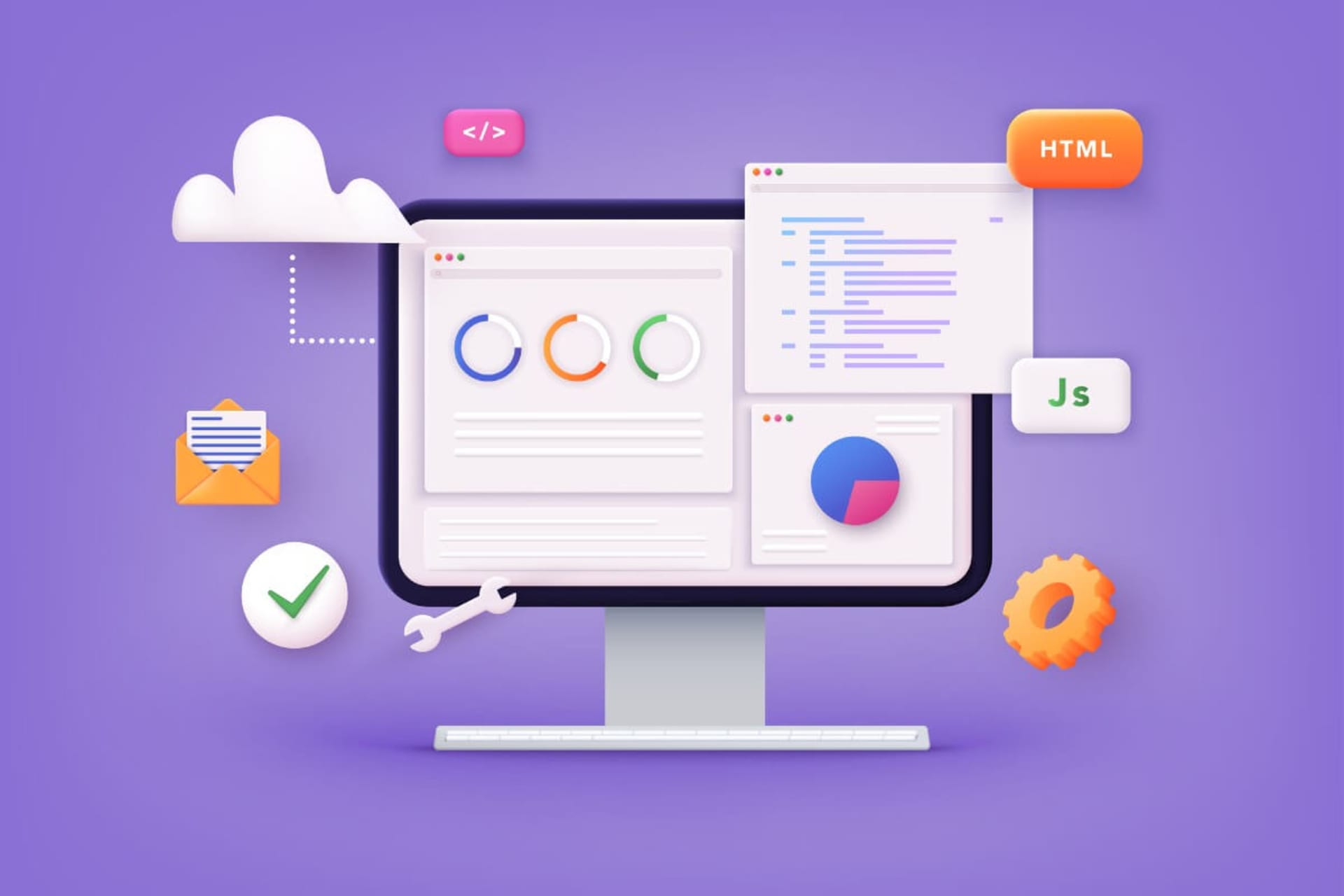- Home
- Technologies
- GIS
- Hire GIS Developers
Hire GIS Developers
Hire vetted GIS talent.
Our top 1% of tech talent has already undergone a rigorous vetting process. Get bilingual, nearshore GIS developers on your team within 2 weeks.
500+ companies rely on our top 1% tech talent.
No time to find the talent yourself? Skip the recruitment process.



How to Hire GIS Developers
Geographic Information Systems (GIS) are key in urban planning, logistics, and environmental conservation. As businesses rely more on location-based data, the demand for GIS developers is growing. But hiring skilled developers is hard — it requires technical skills, industry knowledge, and proven results. We connect businesses with the top 1% of tech talent, so you’ll find developers who can deliver great GIS solutions for your projects.
This guide is based on our experience delivering over 1,200 projects across 100 industries. It covers what to consider before hiring, the skills GIS developers need, and the questions to ask when finding top talent. Use this to make informed decisions and move forward on your roadmap.
Before You Start Hiring
Project or Team Requirements
GIS projects can involve building mapping applications, updating existing systems, or integrating geospatial tools into bigger frameworks. Define your scope, objectives, and deliverables. Do you need someone to build complete solutions, refine existing tools, or work within a team? Clear goals will help you hire GIS developers with the right skills for your needs.
Industry Experience
GIS applications differ by sector. Urban planning projects focus on zoning and spatial design, and logistics projects on route optimization. A GIS developer with experience in your industry will work with your data and understand the challenges your industry faces.
Modernization
GIS technology is evolving with ArcGIS, QGIS, PostGIS, cloud platforms, and real-time data analysis. Developers familiar with these tools will modernize your workflows, making them more scalable and efficient. Their expertise will help you adopt the latest best practices for long-term growth.
Team Player
GIS development involves working with multiple teams — analysts and decision-makers. Developers who are great at collaboration can communicate, share ideas, and align with the team’s goals. This level of coordination means faster progress and better results in complex projects.
Flexibility
GIS projects involve managing multiple datasets, dealing with regulation changes, or adjusting to new requirements. Developers that can adapt well can respond to these changes without losing momentum. Their ability to pivot and problem-solve keeps the project on track even when things change.
18 Skills for GIS Developers
GIS developers are key to turning geospatial data into solutions for industries like urban planning, logistics, and environmental conservation. Their skills in mapping, spatial analysis, and application development directly impact business strategy and operations. Hiring a GIS developer means improving geospatial systems’ accuracy, scalability, and efficiency.
Here are 18 skills, technical and soft, that GIS developers need to deliver results.
Technical Skills
1. GIS Software (e.g., ArcGIS, QGIS, Global Mapper)
Mastery of ArcGIS, QGIS, and Global Mapper is key to mapping solutions and geospatial data visualization for business.
2. Spatial Analysis Skills
Buffer and network analysis to solve logistical and infrastructure challenges by identifying geospatial relationships.
3. Geospatial Data Management (e.g., PostGIS, SQL)
Experience with spatial databases to manage and query large datasets is critical for web application development and data analysis.
4. Programming (e.g., Python, R)
Developers who are proficient in Python and R can automate GIS workflows, process geospatial data, and integrate GIS with other software systems.
5. Web GIS Frameworks
Like Leaflet and ESRI’s ArcGIS API allows developers to build interactive web applications that make geospatial data accessible to non-technical users.
6. Remote Sensing and Image Processing
Analyzing satellite imagery and aerial photos for environmental monitoring and disaster recovery planning.
7. Data Visualisation
Developers that can create heat maps, choropleths, and 3D models to help stakeholders understand complex spatial data.
8. Cartography
Good cartography means maps are functional and visually clear, and communication across teams and stakeholders.
9. Geospatial Modelling
This involves predictive analysis, such as flood risk assessment or urban growth trend analysis, to support strategic planning.
10. API
Experience with APIs like Google Maps and Mapbox to add features like geocoding and live updates to GIS web applications.
11. Spatial Data Formats and Standards
Knowledge of formats like GeoJSON and shapefiles for data interoperability and compatibility across systems.
12. Real-time Data Handling
Live data such as traffic or weather updates for industries where decisions are time-critical.
13. Cloud GIS Platforms
Like AWS and ESRI’s ArcGIS Online to manage large datasets and scale geospatial applications.
14. Quality Assurance and Debugging
Focus on QA and debugging to minimize errors and improve GIS systems reliability.
Soft Skills to Look for in Your Ideal GIS Developer
15. Communication
GIS developers need to simplify geospatial concepts for non-technical stakeholders to enable better decision-making and alignment across teams.
16. Troubleshooting
Developers with problem-solving skills effectively handle data inconsistencies or gaps to ensure progress in GIS projects.
17. Flexibility
Developers with problem-solving skills effectively handle data inconsistencies or gaps to ensure progress in GIS projects.
18. Attention to Detail
From data verification to map production, detail-oriented developers deliver reliable and high-quality results.
14 Questions to Identify Top GIS Developers
When interviewing GIS developers, you need to ask questions that first test their technical skills and knowledge. Employers will also do a coding test to test specific on-the-job skills.
These questions will test not only the developer’s technical knowledge but also their problem-solving skills, teamwork, communication skills, and adaptability — all essential in a team environment.
Here are a few examples:
1. How do you work with spatial data in a project?
I start by clarifying the project objectives and identifying the required datasets. I standardize spatial data using ArcGIS. For a logistics project, I aligned customer locations with road networks to optimize delivery routes.
2. How do you resolve projection issues in GIS data?
I check for mismatched coordinate systems and reproject datasets using QGIS. In a regional planning project, I resolved conflicts to ensure alignment across multiple datasets.
3. How do you create an interactive map for non-GIS users?
I use tools like the Google Maps API to build maps and add features like Zoom and search. For a utilities dashboard, I displayed real-time outage data with easy navigation for non-technical users.
4. How do you validate spatial analysis?
I cross-check data with trusted sources and do exploratory checks. In an environmental project, I reviewed elevation data against satellite imagery before analysis.
5. How do you combine multiple datasets for a GIS project?
I align datasets by standardizing projections and checking for data gaps. For transportation optimization, I merged traffic data, road networks, and weather patterns into one system.
6. How have you used GIS to solve a particular problem?
For city planning, I analyzed zoning laws and population density to identify areas for affordable housing. My analysis helped prioritise development sites.
7. How do you optimize GIS applications?
I use caching for frequently accessed data and optimize map layers to reduce processing times. For a real-time tracking app, I simplified map layers to speed it up.
8. How do you handle sensitive data in GIS?
I anonymize data and restrict access based on user roles. For a healthcare project, I applied permissions to protect patient data while allowing analysis of aggregate trends.
9. Have you worked with remote sensing data?
I’ve used satellite imagery to monitor environmental changes. For a forestry project, I tracked deforestation to inform conservation strategies.
10. How do you keep up to date with GIS tools and technology?
I follow GIS experts, attend workshops, and try out tools like Google Earth Engine to bring the latest techniques to my work.
11. Can you give an example of when project requirements changed and how you handled it?
This question tests the candidate’s adaptability and problem-solving skills. Their answer should show how they assess the changes, communicate with stakeholders, and adjust workflows to meet the new objectives.
12. How do you explain technical GIS concepts to non-technical people?
This question tests the candidate’s ability to simplify complex things. Look for examples where they bridged the gap between technical analysis and business decision-making.
13. Why do you specialize in GIS development?
This question helps you understand their passion and alignment with the industry. Their answer will give you insight into their long-term commitment to GIS and how it aligns with your organization’s goals.
14. How do you keep up to date with the latest GIS tools and technology?
This shows the candidate’s commitment to learning. Look for answers that mention attending workshops, following industry leaders, or trying out new tools in their personal projects.
Frequently Asked Questions
How do I know what level of GIS expertise I need?
The scope of your project determines the level of expertise you require. If you focus on mapping or basic spatial analysis, mid-level GIS developers can usually meet those needs. For advanced tasks like real-time geospatial data management, predictive modeling, or integrating complex GIS software, senior developers are necessary. Whether hiring GIS developers for a full-time role or bringing in freelance GIS developers for a specific project, matching their expertise to your goals is key to moving your project forward.
What tools and technologies should a GIS developer know?
They should work with ArcGIS, QGIS, and PostGIS for geospatial analysis and spatial databases. Python and JavaScript skills and knowledge of cloud platforms like AWS are a plus.
How does a GIS developer handle data privacy and compliance?
A GIS developer can anonymize data, use secure access controls, and follow regulations like GDPR and HIPAA to protect sensitive data throughout the software development lifecycle.
What’s in a good GIS developer portfolio?
Look for examples of interactive mapping solutions, projects with measurable outcomes, and clear methodologies for solving geospatial problems.
How does a GIS developer handle real-time data?
A GIS developer uses GeoServer or ESRI’s Real-Time GIS to process live data streams, focusing on latency and scalability for critical applications.
Can a GIS developer modernize old spatial systems?
Yes, a GIS developer can audit existing systems, recommend updates and migrate data to modern platforms, improve performance and compatibility with new technology.
How do I measure the ROI of hiring a GIS developer?
ROI is shown in improved operations, reduced costs, and faster decision-making. For example, optimized routing saves fuel costs, while streamlined mapping systems support better resource management.
What are the benefits of hiring dedicated GIS developers over freelance GIS developers?
Dedicated GIS developers provide consistent expertise and reliability for long-term or complex projects. They integrate fully with your team, handling mapping solutions, spatial analysis, and data analytics. Freelance GIS developers are often better suited for short-term or one-off tasks. Dedicated developers are more familiar with your organization’s workflows and can better align with your goals, delivering consistent progress and measurable results over time.

- Hire GIS Developers
How Businesses Can Overcome the Software Development Shortage
BairesDev Ranked as one of the Fastest-Growing Companies in the US by Inc. 5000











